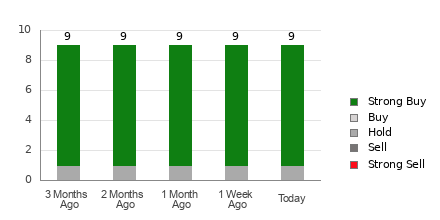Natural Gas Prices Climb as Colder Weather Boosts Heating Demand
February futures for natural gas see a notable increase amid shifting forecasts.
On Wednesday, February Nymex natural gas (NGG25) ended trading up by +0.202, marking a rise of +5.86%. Colder temperatures projected for parts of the United States have heightened expectations for heating demand for natural gas. According to Maxar Technologies, from January 18-22, temperatures in the Midwest are expected to be lower than earlier predictions.
In the midst of this price surge, the weekly report from the EIA showed that U.S. natural gas inventories dropped by -40 bcf, which was only slightly below the anticipated draw of -42 bcf.
Data from BNEF indicates that natural gas production in the lower 48 states on Wednesday was recorded at 100.7 bcf/day, a decrease of -6.7% compared to last year. In contrast, natural gas demand in these states rose to 124.2 bcf/day, reflecting an increase of +18.6% year-over-year. Additionally, net flows of liquefied natural gas (LNG) to U.S. export terminals were reported at 13.9 bcf/day, down -3.2% from the previous week.
Despite the demand growth, a downturn in electricity output could dampen natural gas needs from utility providers. The Edison Electric Institute stated that for the week ending January 4, total electricity output in the U.S. (lower-48) decreased by -2.73% year-over-year, totaling 77,518 GWh. However, when looking at the 52-week period ending January 4, electricity output increased by +2.37% year-over-year, summing up to 4,179,498 GWh.
The latest EIA report had slightly bearish implications for natural gas prices. The -40 bcf inventory draw fell short of the forecast and was significantly less than the five-year average draw of -93 bcf for this time of year. As of January 3, natural gas inventories were +1.1% higher compared to last year and +6.5% above the five-year seasonal average, indicating a solid supply of natural gas. In Europe, gas storage was at 70% capacity as of January 5, which is below the five-year average of 76%.
On the drilling front, Baker Hughes reported last Friday that the number of active U.S. natural gas drilling rigs rose by +1 to 103 in the week ending January 3. This is a modest increase above the three-and-a-half-year low of 94 rigs recorded on September 6. Active rigs have seen a decline from a five-and-a-quarter-year high of 166 rigs in September 2022, which had climbed from a record low of 68 rigs during the pandemic in July 2020.
On the date of publication,
Rich Asplund
did not have (either directly or indirectly) positions in any of the securities mentioned in this article. All information and data in this article is solely for informational purposes. For more information please view the Barchart Disclosure Policy
here.
The views and opinions expressed herein are the views and opinions of the author and do not necessarily reflect those of Nasdaq, Inc.







